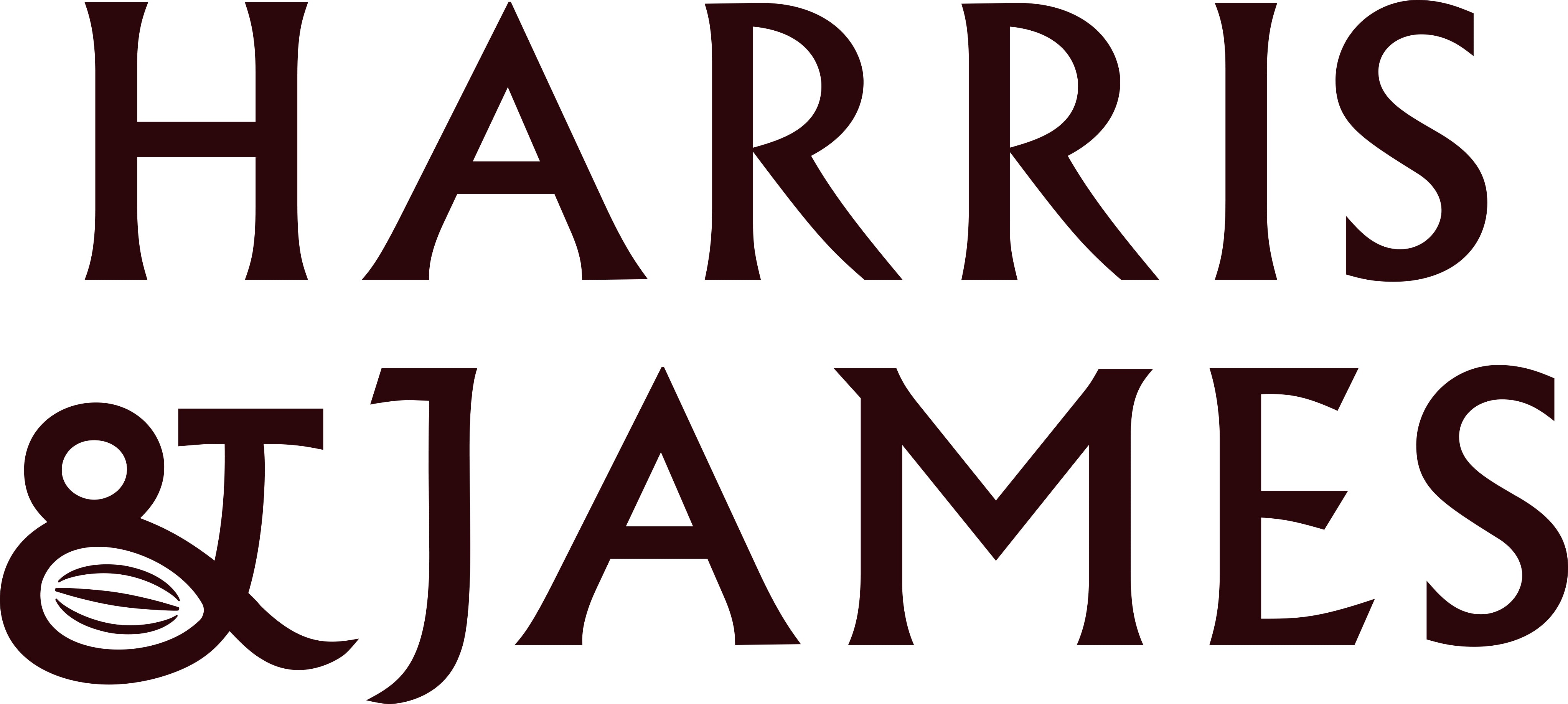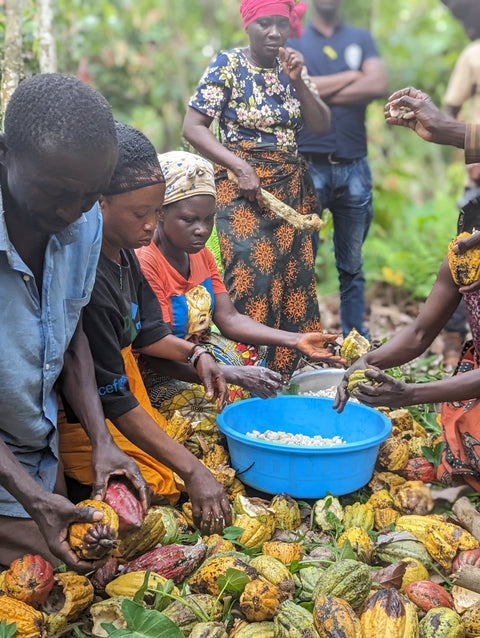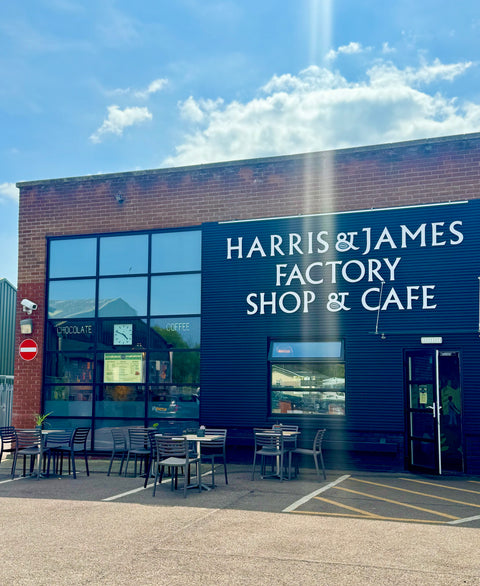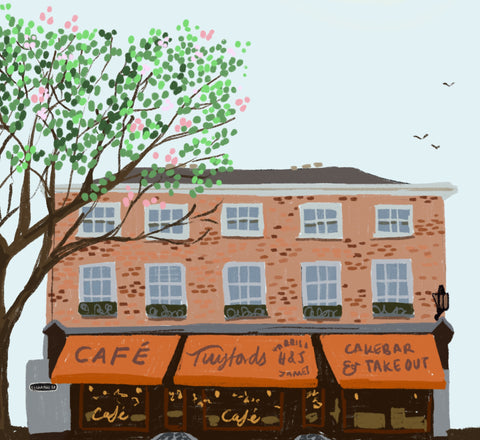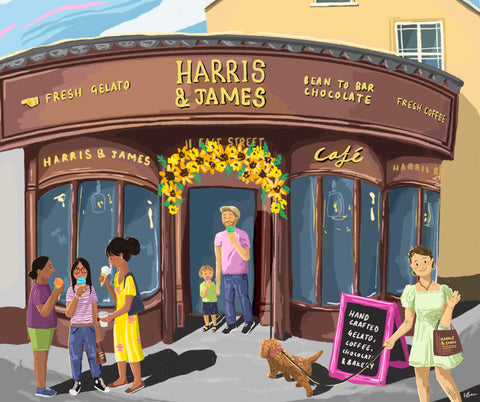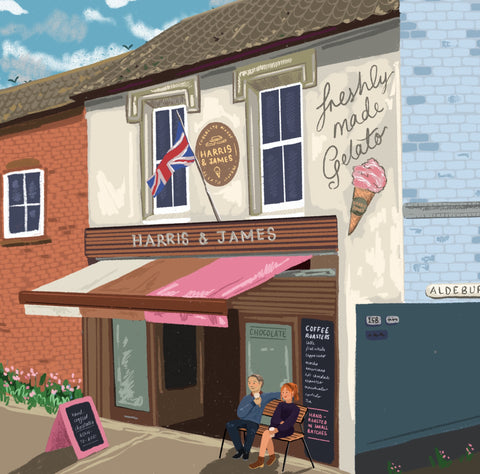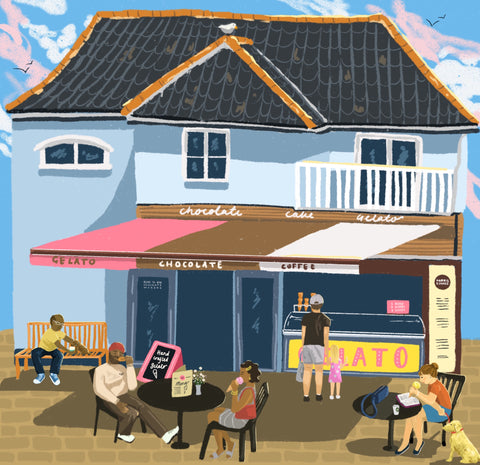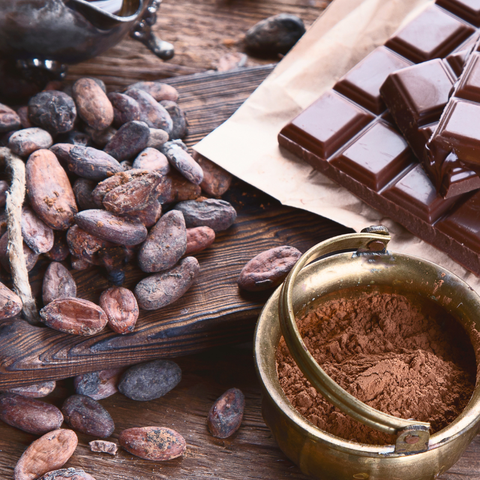 It’s a fact… the world eats a lot of chocolate. Especially all of us at Harris & James. But how much do you really know about this popular treat? If you’re a fan of the sweet stuff then read on as we provide a rundown of the best chocolate facts out there.
It’s a fact… the world eats a lot of chocolate. Especially all of us at Harris & James. But how much do you really know about this popular treat? If you’re a fan of the sweet stuff then read on as we provide a rundown of the best chocolate facts out there.
-
It took 8 years to develop the recipe for milk chocolate 🍫
Wow we heard you say. That’s a pretty long time, right? We guess that explains why it tastes so damn good. Daniel Peter, a Swiss chocolatier, spent 8 long years trying to figure out a recipe for milk chocolate. It wasn’t until 1875 that he realised using condensed milk and dehydrating was the answer to all of his troubles.
- Chocolate is good for your teeth 👄
Yup, you certainly read that right. Chocolate has an antibacterial effect on the mouth, as eating pure cocoa has been shown to prevent tooth decay. This raises just one question… why has no brand produced a chocolate-flavoured toothpaste?
- Chocolate was a form of currency in the Mayan times 💴
Cacao beans were so sought after during the Mayan and Aztec times that they were used as a form of payment. I mean, imagine being able to buy things with chocolate. Pretty fabulous if you ask us.
- The world’s biggest chocolate bar weighed in at 12,770 pounds! 😮
The Guinness World Record for the largest chocolate bar in the world was set by Thorntons on September 7th 2011 and weighed 5,792.50kg (about 12,770 lbs). Do you think perhaps H&J could be the next record-holders? Hmm.
- Britain really is a nation of chocolate lovers 👑
In Britain, we eat an estimated 660,900 tonnes of chocolate a year, an average of 11kg per person per year. This equates to about 3 bars a week. Wow! That’s a lot of chocolate...
- It really is ‘the food of the Gods’ 🌟
The scientific name for chocolate is Theobroma cacao, which literally translates from Greek as ‘the food of the Gods’. This title was given to it in the mid-1700s by Carl Linnaeus, the Swedish naturalist who came up with our system for classifying animals and plant species. Well, there you go. It’s official!
- Some of the UK's most popular chocolate bars are 100 years old 👴
Many of our most-loved chocolate bars were invented during a golden age of creativity in the 1920s and 1930s. Some examples of chocolate bars at this time include Cadbury’s Flake, Fruit & Nut and Crunchie bars in the 1920s. The Mars Bar came in 1933. And now we have the likes of our H&J Peanutty and Hazeleta bars. Heaven!
- The first-ever chocolate bar was made in UK 🥇
We are really very happy about this one. The first solid chocolate bar was produced by Fry’s in 1847 and the chocolate bar market has grown tremendously since then. Almost 200 years later and chocolate is still one of the most-loved sweet treats in the UK. Yup, we’d even go as far as saying THE most-loved treat.
- Milk chocolate is the most widely distributed variety 🍬
Milk choc, as the name implies, has milk added to it. The milk is usually in the form of liquid, powdered, or condensed milk. It is far creamier and softer than other chocolates. What do you think… is milk your fave variety?
- Cacao trees can live for 100 years 🌱
That makes them pretty damn special, don’t you think. Although cacao trees can live for around 100 years, they are only productive for around 60 years. They bear fruits throughout the year, and the fruits take 4-5 months to grow, and several weeks to ripen.
- The first chocolate treat was hot chocolate, not a chocolate bar ☕
According to history, hot chocolate was used in rituals and ceremonies in both Mexican and Aztec cultures. It was rather bitter due to the lack of sugar in those times, so it tasted nothing like the creamy, delicious varieties we offer in all of our stores today. Mmm, now we want hot chocolate. Anyone else?
- Dark chocolate heightens brainpower 🧠
Now, this is definitely something we’re glad we now know. A study says consuming dark chocolate will give your mind a short-term boost. It can increase alertness for about two to three hours. Have you ever needed more of an excuse to scoff some chocolate before an exam, we think not.
- White chocolate is not actually chocolate 🍫
Yes, that creamy rather tasty white chocolate isn’t actually chocolate. WHAT?!? White chocolate is made from cocoa butter, sugar and milk products. So, according to the facts, white chocolate is not chocolate. Even though it has cocoa butter, it doesn’t have cocoa solids, and they are the most important component of chocolate. Cocoa butter is made using a cocoa press - the cocoa mass is added and a powerful hydraulic press squeezes the cocoa butter out and leaves behind a cocoa cake which cocoa powder is made from. Good quality cocoa butter is left undeodorised (deodorisation removes the flavour) and is used in premium bean to bar white chocolate which maintains a pleasant chocolate flavour. Our tasty Madagascan Caramelised White Chocolate with contains just three simple ingredients cocoa butter, milk and sugar....simplicity at its best.
- Humans vs Chocolate 🥊
Scientists have discovered that the cocoa tree has almost 30,000 DNA genes more than humans! Perhaps this is the reason that single origin kraft chocolate has so many unique flavours. Our Kaithapara Vanam 70% Dark Chocolate Bar or our Intense 85% Dark Chocolate Bar that hails from Garyth, Ecuador are great examples to give a try!
- It takes 400 cacao beans for 1lb of chocolate 😋
When you consider that the average cocoa pod contains 40 beans, that’s quite a lot of beans to harvest and collect to make our beloved sweet treat. There’s a lot of work that goes into making delicious chocolate. Next time you tuck into your fave choc treat, remember how much effort has gone into creating it.
